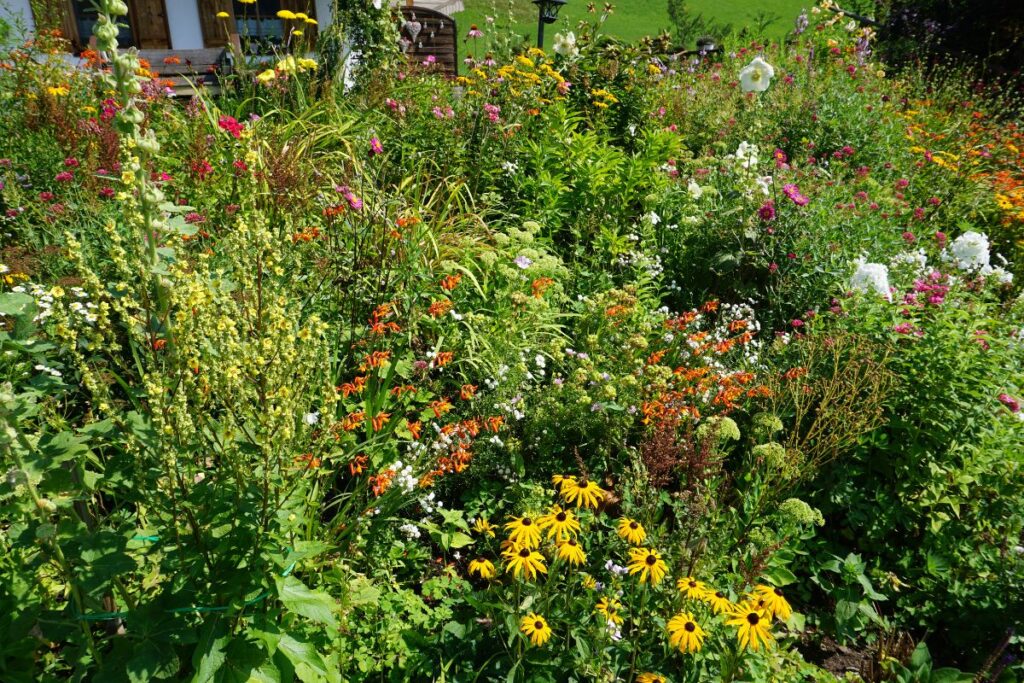Whether you live on Hilton Head, in Bluffton or in Sea Pines, you already know that the Lowcountry environment is beautiful but challenging. Heat, humidity, salt air, sandy soils, occasional droughts and salt spray all demand gardens and landscapes that are suited to those conditions. One of the best ways to build a landscape that thrives with less maintenance, less water, and more wildlife is by using native plants.
Here’s a guide to why natives matter, how to incorporate them, and practical landscaping tips for Lowcountry homeowners, including water-conservation best practices.
Why Choose Native Plants?
Adapted to local environment.
Native plants evolved over many generations in local soils, climate, pests and seasonal patterns. They tend to be better able to handle our hot, humid summers, occasional drought, salt exposure, and soil conditions.
Support local wildlife.
Butterflies, bees, hummingbirds and other pollinators depend on native plants for food (nectar, pollen) and for larval host plants. According to Clemson’s Home & Garden Information Center (HGIC), native plants and animals evolved together, so native plants help restore and sustain local ecosystems.
Lower maintenance and fewer inputs.
Once established, many natives need less watering, fertilizing and pest control than exotic or highly cultivated species.
Landscaping & Water Conservation Tips in the Lowcountry
Alongside choosing native plants, optimizing how you design and care for your landscape can significantly reduce water use and improve plant health.
Here are some practical suggestions:
| Tip | What to Do | Why It Helps |
|---|---|---|
| Responsible Irrigation | • Water only when plants show stress (wilting, browning) rather than on a fixed schedule. • Use drip or micro-spray systems for flower beds, individual plants. • Calibrate sprinklers so lawns or planters get ~½ to ¾ inch of water per watering. • Use rain sensors & automatic shut-off devices in systems. • Follow local ordinances: for example, Hilton Head restricts which days you can irrigate based on address & requires rain sensors on new irrigation systems. (SOURCE: Hilton Head Public Service District) | Prevents overwatering, reduces waste, lowers bills, protects local waterways from runoff. |
| Design for Rainfall | Plan a landscape so established trees & shrubs rely on natural rain except during drought. Use rain gardens or swales to capture runoff. Mulch to retain moisture. Plant groundcover to reduce evaporative loss. | Helps reduce irrigation needs and improves soil health. |
| Choose the Right Plant for the Right Spot | Match native plant species to soil type (sandy, loamy), sun exposure (full sun, partial shade, shade), moisture levels (wet, dry). Use native plants for edges near marshes or salt exposure if relevant. Avoid planting water-loving species in dry, sandy areas. | Plants will thrive better, need less water and fewer inputs, and resist stress. |
| Mulching & Soil Health | Use organic mulch around plants and trees (wood chips, leaves). Don’t bury stems. Leave leaf litter where possible. Amend soil gently if needed, but many natives do fine in native soils if well selected. | Mulch moderates soil temperature, reduces evaporation, suppresses weeds. Poor soil is less of a problem if you select plants adapted to it. |
Native Plant Suggestions for the Lowcountry
Clemson’s HGIC and Carolina Yards programs offer databases and info for native plants that are suitable for South Carolina, many of which do well in the Lowcountry.
Here are categories and some examples:
| Plant Type | Example Species | Best Use / Conditions |
|---|---|---|
| Trees | • Live oak (Quercus virginiana) • Southern magnolia (Magnolia grandiflora) • Red maple (Acer rubrum) | Provide shade, work well near moist soils or transitional zones; good for shade, screening. |
| Shrubs | • Wax myrtle (Myrica cerifera) • Beautyberry (Callicarpa americana) • Sweet shrub (Calycanthus floridus) | Understory, screening, attract pollinators/birds; many tolerate partial shade. |
| Perennials / Wildflowers | • Milkweed species • Coneflowers (Echinacea) • Coreopsis • Lanceleaf tickseed | Good for pollinators; plant where full sun is available; drought tolerant once established. |
| Groundcovers / Grasses | • Muhly grass (Muhlenbergia capillaris) • Blue flag iris (Iris virginica) • Carolina jasmine (Gelsemium sempervirens) • Fakahatchee grass (Tripsacum dactyloides) | Helps fill in low spaces, reduce weeds, retain soil; use in areas that need erosion control or ornamental interest. |
(Note: Always check for native status and suitability for your specific lot, exposure, and soil type.)
Layered Planting for Efficiency & Beauty
Use layers.
Trees overhead, shrubs beneath, herbaceous perennials & groundcovers below. This mimics natural forest/marsh edges and helps shade soil, reduce weeds, and regulate temperature.
Buffer zones along marshes or water bodies.
Use salt-tolerant natives along marsh edges. They help reduce runoff, filter nutrients, protect against erosion.
Seasonal interest.
Choose natives that flower at different times, or have different leaf textures or fall color, so the garden has visual interest year-round.
Maintenance Considerations
Pruning.
Native shrubs and trees often require less shaping but benefit from occasional deadwood removal and thinning to maintain health.
Weed control.
Early establishment is the tricky period when weeds can compete. Mulch well, hand-pull weeds, or use landscape fabric temporarily.
Pest & disease minimal.
Because natives are locally adapted, they usually resist common pests/diseases better than exotics. Avoid overuse of chemicals.
Drought / storm recovery.
After major storms, select resilient natives that can recover from salt spray, inundation, or wind.
Water Conservation Laws & Local Rules
Since water is a limited resource, especially during drier months, it helps to know local rules and work within the system:
Hilton Head’s irrigation ordinance:
Even/odd address watering days, specific allowed days per week depending on type of property (residential, commercial, etc.).
Rain sensor requirement:
New irrigation systems must include a rain sensor.
Irrigation tips:
Calibrate sprinklers, use drip/micro spray, water plants separately from lawns, mow lawns high to promote deep root systems, install automatic shut-off timers.
Resources for Getting Started
Here are helpful databases, programs, and organizations to consult as you plan your native + low-water landscape:
- Clemson HGIC – Native Plants for Wildlife: Resources for Home Gardeners
- Carolina Yards Program via Clemson Extension — searchable plant databases, design guides, best practices.
- South Carolina Native Plant Society (SCNPS) — native plant info, tours, sales.
- National Wildlife Federation – native plant database searchable by ZIP code.
- Audubon Society native plants database — for selecting species to support birds.




